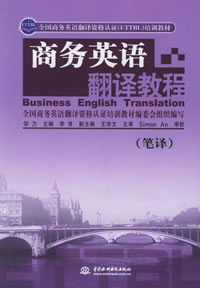怎样做好英文审校工作
作者:古龙 2009-07-04




语际翻译公司 转载请注明https://www.scientrans.com
∗本栏目部分文章内容来自互联网,部分已经过本站编辑和整理,如有版权事宜请联系Email/MSN jesczhao@hotmail.com
Proofreading Your Work
It’s every translator’s worst nightmare. You send a translation to a client and you realize later that it had a typo. Or worse, the client sends it back to you marked with so many corrections that it looks like they bled on your work. It’s one thing when a client questions grammar or word choices, but poor punctuation or misspelled words are practically unforgivable.
Every document you translate is a reflection on you and your skills. You don’t want careless errors giving your client a bad impression.
Some people devote only a few minutes to proofreading, hoping to catch any glaring errors that jump out from the page, but a quick job, especially after you've been working long and hard on a translation, usually misses a lot. It's better to work with a definite plan that helps you to search systematically for specific kinds of errors. This takes a little extra time, but it pays off in the end.
Here are a few tips to make your translation as close to perfect as possible.
• Take a break between writing and proofreading. Set the document aside for at least 20 minutes or longer whenever possible. Go for a run. Get a bite to eat. Watch a movie. Approach your writing with a clear head so you can look at the translation fresh.
• Proper lighting is essential. Don't use fluorescent lighting when proofreading. The flicker rate is actually slower than standard lighting. Your eyes can't pick up inconsistencies as easily under fluorescent lighting.
• Use spell-check wisely. Word-processing programs have spell-checkers that will catch most but not all spelling errors. They might suggest a word that isn't what you want at all. Make sure that your text says that ‘She’s anxious to meet him.’ and not ‘meat him.’ Get the point? Don’t rely entirely on them.
• Print out your work. I know, you don’t want to “waste” your paper and printer cartridge, but you’re more likely to catch typos and mistakes looking at a hard copy. The eye tends to scan information on a screen, but actually reads it when it’s on a printed page.
• Break down your tasks. The number of things you need to look out for may overwhelm you. It’s best to break it down into more specific proofreads. For example, one proof for spelling, one for type of font and size, etc.
• Read out loud. Read the text out loud and slowly, articulating each word as it is actually written. We have two senses – seeing and hearing – working for us. What one sense misses, the other may pick up. When you read silently or too quickly you may skip over errors or make unconscious corrections.
• Read backwards. You might also want to proofread your text backwards. Read each sentence as a separate unit. Because content, punctuation, and grammar won't make any sense, your focus will be entirely on the spelling of each word.
• Proof tables and lists separately. Proof the most prominent text separately such as headings, table of contents, titles, etc. You’ll be surprised how people forget these while proofreading their work. When proofing a numbered or lettered list, take a moment at the beginning and run down the list counting each number out (or each letter) making sure that the numbers or letters flow in their proper order. When proofing a table of contents, make sure the page numbers are accurate. Make sure all headings are formatted identically and numbered properly.
• Keep a “Bible.” Write out proper names and specific terminology on a separate sheet of paper and check it against every instance in the main document to ensure they are spelled correctly each time. Pay special attention to things like accent marks.
• Check spacing, bullets and tabs. Look for spacing problems between words and lines and in areas with bullets. Make sure the tabs line up –especially from page to page.
• Use specific notations. When marking the document, try using proofreader marks. Be clear and specific about your corrections; do not simply circle the errors. Do not use a black pen to mark your changes. Use a colored ink that will “pop out” at you as you look at the page. Thi
- 评论
- seme:文章内容文章内容文章内容文章内容文章内容文章内容文章内容文章内容文章内容 章内容文章内容文章内容文章内容文章内容
- seme:文章内容文章内容文章内容文章内容文章内容文章内容文章内容文章内容文章内容 章内容文章内容文章内容文章内容文章内容

- 怎样做好英文审校工作
2009-6-10 23:10:42 - Proofreading Your Work It’s every translator’s worst nightmare. You send a translation to...
- 英文论文中的常见错误 Common Errors in …
2009-6-10 14:27:12 - This is not an exhaustive list. With every new lab protocol, you folks come up with the ...
- 第四届IEEE生物信息与生…
2009-6-30 19:42:01 - 基本信息 主办单位: 四川大学,IEEE生物医学工程协会(EMBS) 承办单位 开始日期 2010/06/18 结束日期 截稿日期 2009/1...
- 第九届全国光电技术学术…
2009-6-30 19:35:58 - 基本信息主办单位: 中国宇航学会光电技术专业委员会承办单位 开始日期 2009/11/01结束日期 截稿日期 2009...
















